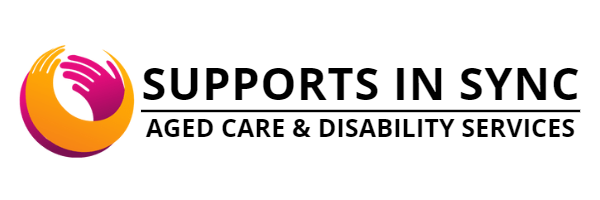How To Manage A Client Who Is Angry Or Aggressive
How to manage a client who is angry or aggressive?
by Agyat Jeevan

It is common to experience problems relating to anger and aggression as it appears when our expectations are not fulfilled or when we see things as a threat, or even it can be an attempt to hide other emotions or communicate our emotional discomfort (Potegal, 2012). Even though some scholars have argued that it is a way of expressing our emotional discomfort, it is not healthy because it affects the holistic aspects of our lives, particularly ecological interactions.
In general, episodes of anger, violence, or aggression are mostly triggered by a particular event that makes us feel threatened, challenged, frustrated, or even intimidated. So, as a mental health social worker, I encourage my clients and friends to emphasise on the triggers to address then on time using biopsychosocial model than on anger itself.
I am pretty much sure, that the definitions of anger and aggressive behaviour are different in different cultures and communities; however, in addition to our psychosocial relationships, it equally affects our health in the same way to everybody regardless of our background and cultural identity and orientation. This is because anger and heart have a very close connection. As mentioned, when we are angry or aggressive, our heart starts pumping blood harder and quicker because of epinephrine and norepinephrine constricting our blood vessels giving additional pressure to its normal flow (Siegman & Smith, 2013). Therefore, people who have anger issues are usually found to live with a riskof suffering from hypertension, heart rhythm disorders, and strokes (Siegman & Smith, 2013; Potegal, 2012). Additionally, glucose and fatty acids are accumulated in our blood properties when we lose our temper leading to plaques in our arteries which eventually thicken the walls of the arteries and the blood vessels get narrow resulting in the possibility of completely blocking the arteries (Siegman & Smith, 2013; Potegal, 2012). Based on this evidence, researchers have claimed that it caused atherosclerosis- one of the triggers of heart stacks and strokes therefore, when we are enraged, we don’t look healthy, at least I consider anger as an unhealthy emotion.
The prefrontal cortex section, which helps us to manage/control our emotions and ability to judge, is linked with anger and aggressive behaviours. To be precise, neuroscientists have discovered that the left part of the prefrontal cortex is associated with anger and aggression. So, we will need to learn behavioural strategies to calm this part down or even switch it off to control our emotions.
I try to teach my clients to mindfully label their emotions in my first session who comes to my therapy to improve their emotional regulation (ER) capacity. In the process, I advise them to imagine a gorgeous angel telling them not to react aggressively but respond mindfully- this angel is Cortex. It is the outer layer of neural tissue of the cerebrum in humans and other animals’ brains which is also known as the cerebral mantle. It is responsible for cognition and plays a key role in attention, perception, awareness, thought, memory, language, and consciousness. The next thing I tell my clients is that the devil lives in the Amygdala and Cingulate, which are responsible for feelings emotions, learning, and making choices. These parts play a key role in directing us either to react or respond. We usually want to be kind and loving personalities, which is not an exception for my clients too. So, most of them chose the Cortex (gorgeous angel) over Amygdala and Cingulate (the devil).
In theory, anger, aggression, and calmness are a war between the cortex and the amygdala (the good vs the evil).

How to manage anger or deescalate anger
Let me tell you this foremost we are unique individuals, and these strategies might not be effective for your or your clients. Therefore, as a social worker or mental health clinician, your first role, in the process of empowering your clients by teaching them anger and emotional regulation skills would be to identify what their strengths, cultural backgrounds, and preferences are. Because in the end, recovery is all about trust and hope, and choice and control.
- Breath slowly: Remember that the catecholamines want us to do the opposite.
- Meditate: Based on your cultural and spiritual beliefs, you can practice yoga and pray. Some people find it helpful when they do the gym and physical activities too.
- Write down or draw what your feelings are: When we write down the reason for our anger, we feel better, and it relieves our tensions. You can try writing a daily journal, a letter to yourself, poetries, stories, essays, or whatever makes you feel better. I don’t feel angry but lonely. I still compose poetries and stories, record them, and upload them on YouTube which makes me happy.
- Do sports and physical pursuits: It helps us to get rid of negative feelings and thoughts, in addition, to doing something for our fitness. It also directly helps us to influence the secretion of serotonin, oxytocin, dopamine, and whatnot.
- Eat well: What we eat affects our feelings too. Try to adopt a healthy diet. Being a vegetarian, I suggest people be vegetarian or at least soft food that digests easily, and your body doesn’t require to spend more energy and time on the food you eat.
- Sleep well and enough: Sleep reduces stress and anxiety. It is directly related to depression and restlessness too. Focus on the quality as well as on quantity too. Normally a healthy person sleeps about 7 hours but based on your needs, capacity, health, and environment too. Consult with your health or welfare professionals if needed further information.
- Psychiatric and mental health professionals: If you think that things are getting out of your grasp, you better consult with psychiatrist for the clinical therapy including medications and other mental health professionals for community-based therapeutic supports. Based on my experiences, the Dialectic Behavioural Therapy out of all talking therapies can be the most effective to identify triggers and learn strategies to improve your emotional regulation capabilities.
These are only some strategies, and you can explore more if you are interested on your own or under your therapist’s supervision. You can read peer-reviewed articles, research papers, and books published based on the evidence for more knowledge. Also, if you are not sure what works for you and how you want to support yourself, feel free to discuss your emotional complexities and what works for you with your health, allied health, and welfare professionals to develop a treatment plan that meets your support needs.
Are we allowed to be angry and aggressive?
We are allowed to be angry but not aggressive. I also believe that we sometimes feel better when we angrily expressed our feelings and opinions. In some cultures, anger and aggression could be the indication of masculinity, which I believe is toxic. Anyway, we can be angry but not in an aggressive manner.
Furthermore, if we want to lead a happy and long life, we need to keep ourselves calm and anger-free. I know change is painful but necessary for better well-being. We can seek assistance from therapists, social workers, mental health professionals, and health workers if our pre-existing strategies are not working anymore and if you are ready to embrace the positive changes or even contemplating to constructively manage your anger.
Keep in mind that everybody has the right to be supported and live a fulfilling life. Also everybody has right to make mistake and that doesn’t mean we don’t deserve to live a contentment life.

What to do and what not to do when we are working with angry and aggressive clients?
According to ‘Crack in The Ice’ website, we can apply the following techniques to deal appropriately with angry or aggressive clients considering the employer’s policies and procedures:
- Stay Calm.
- Have non-threatening body language- hands by your empty palms facing forward, body at a 45-degree angle facing an aggressor.
- Let the clients speak about his/her feelings and appropriately acknowledge them.
- Ask open-ended questions to keep the conversations going.
- Be flexible within reason and limit.
- Use the space for self-protection- position yourself close to the exit and don’t crowd the client.
- Ensure the work environment is safe- have alarms in place and remove items that can be used as a weapon, and
- Make sure a client you are dealing with; other clients and you are safe.
These are not to do things:
- Challenge or threaten the clients with voice, action, body language, eye contact, or your position.
- Say things that will escalate their anger.
- Yell, even if the client is yelling or verbally aggressive at you.
- Turn your back on the client.
- Rush the client.
- Argue with the client.
- Stay around if the client doesn’t de-escalate.
- Ignore verbal threats or warnings of violence.
- Tolerate violence or aggression (safety comes first!), and
- Try to remove weapons or assaultive items from the client where possible. If things are out of control call 000 immediately.
References
Cracks in the ice. (20220. Managing a client who is angry or aggressive. https://cracksintheice.org.au/aboriginal-and-torres-strait-islander-peoples/managing-a-client-whois-angry-or-aggressive.
Potegal, M. (2012). Temporal and frontal lobe initiation and regulation of the top-down escalation of anger and aggression. Behavioural brain research, 231(2), 386-395.
Siegman, A. W., & Smith, T. W. (2013). Anger, hostility, and the heart. Psychology Press.
About the Author
Agyat Jeevan is an AASW Accredited Social Worker and has been working as a mental health professional for about two years now and before that he used to work in the disability industry. If you have got any questions or comment on the content, please feel free to reach out to him on jeevan.bhusal@vt.uniting.org.








